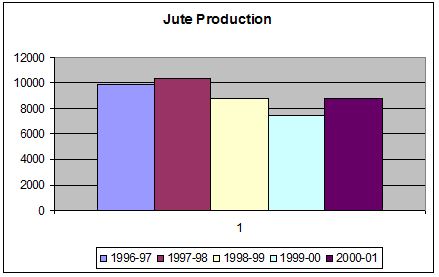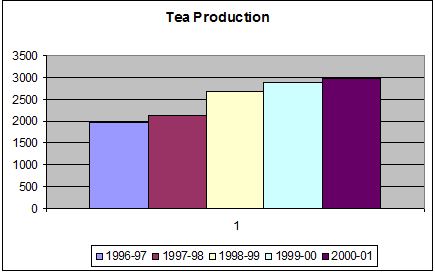Chapter 1-
INTRODUCTION
1.1 Introduction
In the introduction chapter we will focus on the meaning of investment appraisal, justification of doing the project and the objectives of this project.
Investment Appraisal
One of the key areas of long-term decision-making that firms must tackle is that of investment – the need to commit funds by purchasing land, buildings, machinery and so on, in anticipation of being able to earn an income greater than the funds committed. In order to handle these decisions, firms have to make an assessment of the size of the outflows and inflows of funds, the lifespan of the investment, the degree of risk attached and the cost of obtaining funds.
The main stages in the capital budgeting cycle can be summarized as follows:
- Forecasting investment needs.
- Identifying project(s) to meet needs.
- Appraising the alternatives.
- Selecting the best alternatives.
- Making the expenditure.
- Monitoring project(s).
We can classify capital expenditure projects into four broad categories:
- Maintenance – replacing old or obsolete assets for example.
- Profitability – quality, productivity or location improvement for example.
- Expansion – new products, markets and so on.
- Indirect – social and welfare facilities.
Even the projects that are unlikely to generate profits should be subjected to investment appraisal. This should help to identify the best way of achieving the project’s aims. So investment appraisal may help to find the cheapest way to provide a new production, even though such a project may be unlikely to earn profits for the company.
Here, we are going to compare between two-investment appraisals. These two are going to be about jute and tea. We will discuss which of these two will be more profitable as an investment.
1.2 Justification
As we are discussing about jute and tea, we need to know and justify these crops according to the situation in Bangladesh. The economy of Bangladesh is mainly based on the agricultural production. Actually, the agricultural products are running the economical wheel. In this way, both jute and tea are very important. These crops earn us a huge amount of foreign exchange.
Jute is the main cash crop of Bangladesh. 5.32% of the entire foreign exchange we earn is from jute and its other production. Bangladesh is the second country to produce most amounts of jutes over the world. 26% of the main production is now growing in Bangladesh. It is good for business too as it returns a good profit.
Tea is one of those cash crops that earn us a good amount of foreign exchange. It is the second crop that gives us most foreign money. Business of tea and its other production are profitable too.
So, we can invest on either jute or tea. But we do not know which of these two is more profitable for an investor. As a matter of fact, we are going to find it out in this project.
1.3 Objectives
The objectives behind this project are-
- To compare between two investments
- To compare the profitability
- To calculate the cost
- To calculate the return
- To calculate the Net Present Value (NPV)
- To calculate the Profitability Index (PI)
- To give suggestion for policy
-Chapter 2-
OVERVIEW OF THE PROJECT OF
JUTE AND TEA OF BANGLADESH
2.1 Introduction
Agriculture remains the most important sector of Bangladeshi economy, contributing 19.6 percent to the national GDP and providing employment for 63 percent of the population. The 3 main crops—rice, jute, and tea—have dominated agricultural exports for decades, although the rice is grown almost entirely for domestic consumption, while jute and tea are the main export earners. In this project we will find it out the profitability of jute and tea and from which sector we can earn more profit and where we can invest.
2.2 Briefly discussion about Jute Production of Bangladesh
Jute, often called the “golden fiber” of Bangladesh, is the main export-earner for Bangladeshi agriculture, as Bangladesh remains the world’s second-largest producer of jute (after India) and the world’s largest exporter of fiber. Jute is traditionally used for the fiber of carpet backing, burlap bags, cheap paper, and various other purposes. Its importance for the Bangladeshi economy comes from the fact that almost 3 million farms are involved in jute production. In 1999 Bangladeshi export earnings from jute amounted to US$55 million, with the country producing 720,000 metric tons of jute, although this is about one-third of the jute production of the middle of the 1980s. The decline in jute production is attributed to declining world prices for this crop and to farmers switching to other crops.
Here we are showing the value added at current price of jute of five years –
Year | Value added at current price (Million taka) |
1996-1997 | 9887 |
1997-1998 | 10365 |
1998-1999 | 8826 |
1999-2000 | 7409 |
2000-2001 | 8737 |
Now we will see the graph of the value added at current price jute of five years.

2.3 Briefly discussion about Tea Production of Bangladesh
Tea is a popular drink all over the world and its scientific name is (Camellia sinensis)
Tea is an evergreen, perennial, cross-pollinated plant and grows naturally as tall as 15m. However, under cultivated condition, the bush height of 60–100 cm is maintained for harvesting the tender leaves for even more than 100 years. The flowers are white in color and grow singly or in pairs at the axils. The fruits are green in color with 2–3 seeds. The leaf is the main criterion by which the three types of tea are classified as follows.
- Assam type: biggest leaves,
- China type: smallest leaves, and
- Cambod: intermediate leaves.
In Bangladesh there are three kinds of ownership of tea gardens: foreign owned sterling companies, Bangladeshi Joint Stock Companies and privately owned proprietary tea estates. In early 1990s, a total of 12 sterling companies were in tea business. They owned 26 gardens; all located in Maulvibazar and Habigang districts. Fifty Bangladeshi companies owned and operated 73 gardens, of these the National Tea Company owned 12 and 57 were under proprietorship management.
Now we will see the value added at current price of tea of five years-
Year | Value added at current price (Million taka) |
1996-1997 | 1979 |
1997-1998 | 2118 |
1998-1999 | 2669 |
1999-2000 | 2875 |
2000-2001 | 2965 |
Here is the graph of see the value added at current price of tea of five years.

Chapter 3-
PROFITABILITY MEASUREMENT
3.1 Introduction
In this chapter we will know about the meaning of Profit, Net Present Value (NPV), and Profitability Index (PI) and about the rules, which we can accept or rejected. Here we will also calculate the cost of jute and tea, the return of the investment of jute and tea, the net present value and the profitability index of jute and tea.
Profit
Profit means the net earning from an investment.
We can find profit by calculating-
Profit = Net Income – Net Cost
Net present value (NPV)
NPV is a technique where cash inflows expected in future years are discounted back to their present value. This is calculated by using a discount rate equivalent to the interest that would have been received on the sums, had the inflows been saved, or the interest that has to be paid by the firm on funds borrowed.
We can find NPV by calculating-
NPV= Present value of total cash inflows – Initial investment (cost)
Profitability Index (PI)
Profitability index is the ratio of return and cost. Profitability index is an index that attempts to identify the relationship between the cost and the benefit of a proposed project through the use of a ratio calculated as:
PI= Present value of total cash inflows / Initial investment (cost)
Rules
- If PI is greater then 1 (PI> 1) then the project will be accepted.
- If PI is less then 1 (PI< 1) then the project will be rejected.
- If PI is equal to 1 (PI =1) then the project can be accepted or rejected.
3.2 Calculation of the Investment in Production of Jute and Tea
To invest in jute production we need capital for fixed and variable cost. We need land (Fixed cost), labor, seed, fertilizer, insecticide, tiller, transports (Variable costs), etc.
Now it will be determined the cost and return of the production of the jute project. The initial investments (cost) of jute production are-
Costs | Taka |
Land (For 1 year) | 20000.00 |
Labor | 5000.00 |
Seed (1kg) | 500.00 |
Fertilizer | 2000.00 |
Insecticide | 500.00 |
Tiller | 2000.00 |
Transport | 1000.00 |
Others | 500.00 |
Total | 31500.00 |
Total cost = 31500.00
We also need capital to invest for tea production as fixed and variable cost. We need land (Fixed cost), labor, plant, fertilizer, insecticide, tiller, transports (Variable costs), etc.
Now it will be determined the cost and return of the production of the tea project. The initial investments (cost) of tea production are-
Costs | Taka |
Land (For 1 year) | 20000.00 |
Labor | 3500.00 |
Plant (500 pc) | 2000.00 |
Fertilizer | 3000.00 |
Insecticide | 1000.00 |
Tiller | 1000.00 |
Transport | 1000.00 |
Others | 500.00 |
Total | 33000.00 |
Total cost = 33000.00
3.3 Calculation of the Return in Production of Jute and Tea
Probable Return of Jute:
Outputs | Taka |
Raw jute (2500 kg @ 20.00 tk per kg) | 50000.00 |
Jute stick (1000 kg @ 2.00 tk per kg) | 2000,00 |
Total | 52000.00 |
Total Return = 52000.00
Probable Return of Tea:
Outputs | Taka |
Raw Tea (1800 kg @ 25.00 tk per kg) | 45000.00 |
Total | 45000.00 |
Total Return = 45000.00
3.4 Calculation of NPV in Production of Jute and Tea
NPV (Net Present Value) of jute production:
NPV = Present value of total cash inflows – Initial investment (cost)
= 52000.00 – 31500.00
= 20500.00
NPV (Net Present Value) of tea production:
NPV= Present value of total cash inflows – Initial investment (cost)
= 45000.00 – 33000.00
= 12000.00
3.5 Calculation of PI in Production of Jute and Tea
PI (Profitability Index) of jute production:
PI = Present value of total cash inflows ÷ Initial investment (cost)
= 52000.00/31500.00
= 1.65
PI (Profitability Index) of tea production:
PI = Present value of total cash inflows ÷ Initial investment (cost)
= 45000.00/33000.00
= 1.36
3.6 Compare between the production of Jute and the production of Tea and choose the best project
In this chapter we have calculated the total costs, total return, net present value and profitability index of production of jute and production of tea. Now we will compare between these two productions.
In the calculation of the production of jute we found,
Total costs = 31500.00
Total return = 52000.00
Net Present Value = 20500.00
Profitability Index = 1.65%
In the calculation of the production of tea we found,
Total costs = 33000.00
Total return = 45000.00
Net Present Value = 12000.00
Profitability Index = 1.36%
Though the production of jute and production of tea both are profitable for investment but comparatively we can see the jute production is more profitable then the tea production. We can see that the NPV and PI of jute production is greater then tea production. In both project the NPV and PI is acceptable for any investor. But investment in jute production is more profitable then tea production because of its higher NPV and PI. So we will invest our money in jute production.
–Chapter 4-
Summary, Conclusion and Recommendation
4.1 Introduction
This is a framework of this assignment. This assignment shows the use of NPV and PI. By using NPV and PI we can easily find out the more profitable project from several projects. The summary, conclusion and recommendation of this assignment are discussed here.
4.2 Summary
In the first chapter the meaning of investment appraisal, justify the causes of the comparing jute production and tea production and objectives of this assignment are shown. Chapter two is focused on the overview of the value added at current price of jute and tea of five years of Bangladesh by collecting data and the overview of jute and tea. Chapter three focused the meaning of Profit, Net Present Value and Profitability Index. Here we have shown the costs and probable return of jute production and tea production. We calculated Net present value and Profitability Index of jute production and tea production by using our costs and return. Here we compared between the investment of production of jute and production of tea and chosen jute production to invest.
4.3 Conclusion
The comparison between two investment appraisals is discussed in this assignment. We use NPV and PI for selecting the more profitable project from two different projects. We have collected data from the statistical yearbook and the different websites.
We are especially thankful to our course instructor Dr. Laila Anjuman Ara for assigning us in this task so that we have inspired to prepare this assignment.
4.4 Recommendation
Jute and tea both are the cash crop of Bangladesh. But at present the situation jute and tea industry are fall in danger. Jute is the golden fibre of Bangladesh. On the other hand tea is very popular to the people of this country. A lot of people are directly and indirectly related to the production of jute and tea. For improving the production of jute and tea we have to follow some necessary steps. These are-
- Increase the area of production.
- Have to use more effective seeds and plants.
- Government has to concern in these departments.
- Have to increase the loan in these two sectors.
- Have to stop cut down of trees in the hilly areas.
- Have to improve the industries situation.
- Have to give proper salary to employees.
Finally we can say that jute and tea are very important agricultural crops. We can earn a good number of foreign currency by exporting jute and tea. Both are playing an important role in our national economy. So we have to increase the production of jute and tea and also have to concern about the people and industries related with jute and tea.
















